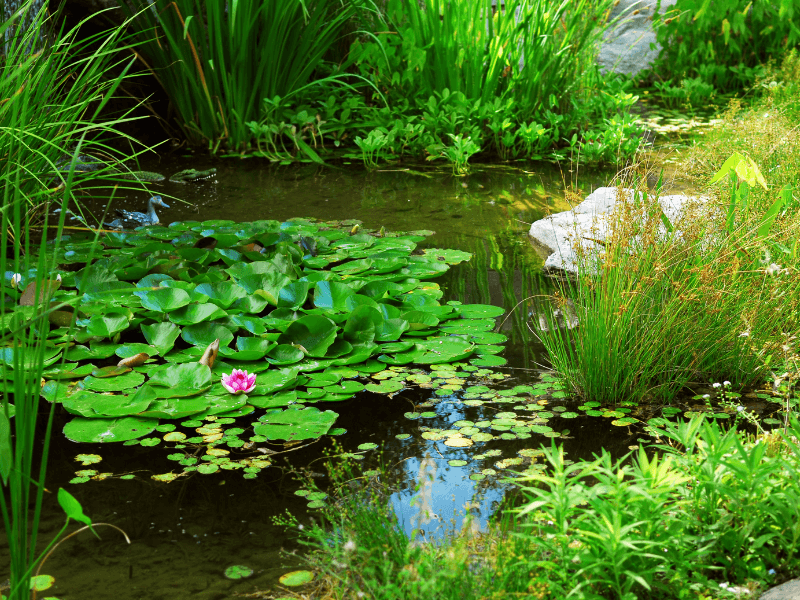Water gardens, also referred to as an aquatic garden or garden pond, have become popular in recent years. A water garden is a man-made feature, which typically combines a pond with aquatic plants and/or ornamental fish. Fixed items such as rocks, fountains, statues and waterfalls can be combined with the pond to add visual interest and integration with the surrounding garden landscape.
Once you have completed digging out your pond and laying the pond liner and protective pond underlay, your water garden is ready for filling with water and adding pond features such as aquatic plants. Many pond owners add a layer of protective underlay above the liner as well as below. The rational for doing this is that the liner is then fully protected from any type of planting method used including the use of boulders or rocks to secure plants in place.

When selecting aquatic plants, it is important to remember that the plants should not cover more than 50 – 60 percent of the water surface. There are many types of plants to choose from. Water garden plants are divided into 3 main categories: submerged, marginal and floating.
Submerged plants are those that live almost completely under water. Some submerged plants have leaves or flowers that grow to the surface such as the water lily. These plants are placed in a pond about 1-2 ft. below the water surface. Some of these plants are called oxygenators because they create oxygen for the fish. Examples of submerged plants are:
- Water lily (Hardy and Tropical)
- Hornwort (Ceratophyllum demersum)
Marginal plants live with their roots under the water but the rest of the plant grows above the surface. These are usually placed so that the top of the pot is at or barely below the water level. Examples of these are:
- Iris (Iris)
- Water-crowfoot (Ranunculus fluitans)
- Bulrush (Scirpus lacustris)
- Cattail (Typha latifolia)
- Taro, Elephant Ear, roots for poi (Colocasia esculenta)
- Arrowhead (Sagittaria latifolia)
- Lotus (Nelumbo)
- Pickerelweed (Pontederia cordata)
Floating plants are those that are not anchored to the soil at all, but are free-floating on the surface. In water gardening, these are often used as a provider of shade to reduce algae growth in a pond. Most are fast growing and as a consequence can pose a threat to the haelth of the pond if not managed. Examples of these are:
- Mosquito ferns (Azolla)
- Water-spangle (Salvinia)
- Water-clover (Marsilea vestita)
- Water lettuce (Nile lettuce) (Pistia stratiotes)
- Water-hyacinth (Eichhornia crassipes)
Algae is found in all ponds. Algae often grows in very high densities in ponds because of the high nutrient levels that are typical of garden ponds. Some species of algae, namely ‘blanket weed’ can grow up to a foot a day under ideal conditions and can rapidly clog a garden pond.
Visit Pond Liners Online Blog for lots of tips and information related to all aspects of garden ponds, pond building, maintenance and liners.





